Susan Cohan, APLD is a certified landscape designer. Her practice specializes in residential landscape design in the NY metropolitan region. Susan’s work has been featured in traditional and digital print as well as other media outlets. Her blog Miss Rumphius’ Rules features work in progress, musings on the creative process and insights on design, she also edits the APLDNJ blog and is passionate about Social Media. A founding member of the NJ chapter of the Association of Professional Landscape Designers (APLD), she also serves on its International Board of Directors as Membership Chair.
Susan, first of all let me commend you for bringing recognition of the APLD (Association of Professional Landscape Designers) to Land8Lounge. I understand that you are the founder of the APLD’s New Jersey chapter. What exciting events are planned for your chapter this year?
Actually, I was only one of several founding members of APLD’s NJ Chapter…3 others that I know of are Land8 members: Laurel Aronson, Susan Olinger, APLD, and Whitney Freeman-Kemp—there could be one or two others that I don’t know about—so if I’ve missed them I apologize! The NJ chapter is growing and like the larger international association, we focus on events that landscape designers can use to add to or augment their skills and knowledge professionally. Some events that are being planned in NJ are a rainwater harvesting workshop this summer and in the fall we have two—one on garden photography and another about developing effective working relationships with contractors. All of the chapters have great programs geared towards all levels of landscape design experience and this summer is also APLD’s annual landscape design conference in Portland, OR. We’re really busy as you can see!
You have a background in fashion design. Can you articulate how a background in a certain design field can parlay into many other realms of design? What lead to your switch from fashion design to landscape design?
It might seem like a cliché, but great design translates across disciplines. The tools are different but the basis of all design problems is the same—a given set of criteria defines and drives the process. Artists start with a blank canvas, designers start with a series of problems to solve. My years in the fashion industry trained be to be observant and aware of all of the influences a design might have, and to not focus on one thing—to look at everything from emerging trends to pop culture to color to materials to history to influential designers in other fields as well as your own. It also taught me to embrace new technology as a means to enhance the creative process. I think many landscape designers are afraid to do this.
I made the switch to landscape design because I wanted to do something new that would draw on all of my experiences to that point. I needed a challenge intellectually and creatively and I wanted to work outside of New York City where I had been working for years. I have always gardened—since I was a child actually. I have also always been drawn to the larger landscape both as a source of inspiration and as a source of personal and creative renewal. It seemed to be a natural evolutionary process in my development as a designer. What surprised me, however, is how much of my past experience I apply on a daily basis to my current practice.
You seem to be quite the Renaissance woman! In addition to your activity with the APLD and being the owner of your own landscape design firm, you also blog about design on missrumphiusrules.blogspot.com. What was the inspiration behind your blog site and what would you like readers to gain from your writings?
Although I appreciate the complement, I’m not really a Renaissance woman, Miss R is written really just for me—another facet of a creative life lived. I love to write and the blog is an outlet for that. Often, the writing helps me clarify a thought or an idea that I have. Since the focus of the blog is on my own creative process within the confines of a landscape design practitioner, I have a lot of leeway to explore different ideas. I hope that Miss R—my alter ego–gives people a small window into how I (and maybe other designers) think and solve problems. It’s not a garden blog, and because of that, it doesn’t fit neatly into many people’s criteria for what they think I should be writing about–it’s a really a public journal. It has a small, loyal following.
I also edit the new APLDNJ blog at http://apld.wordpress.com which is the virtual portal for the NJ chapter. There’s been a lot of interest there in the social media posts and virtual events we’ve been blogging about. I’m passionate about the integration of social media into the landscape design marketing matrix.
It seems that your firm website places an emphasis on the design process. What sorts of experiences have lead to this firm acknowledgement of process in your projects, and how do you try to help clients understand this important part of successful design?
As you know, I specialize in residential landscape design. So, ultimately, I walk away from a project and it becomes an environment for someone else to live in. I involve my clients in their land’s design before they even meet me. I send them ‘homework’ prior to our first consultation so they understand from the onset that I expect their participation in the process—beyond writing the checks.
I believe there are parallel drivers to my work. First, the land—it will tell you what it wants to be if you listen and second, the client will also tell you what they want it to be. My job is to fuse those two ideas into a cohesive whole. If I am successful, then every project will be unique to its environment and will give each client a new appreciation for their land and its use. I always try to compel my clients to use their land in ways they may not have thought of—whether it’s through necessity or destination.
What were some of the most useful lessons that you learned when studying abroad at The English Gardening School at the Chelsea Physic Gardens in London?
I actually began my study abroad after graduating from art school in the 70s at L’Ecole des Beaux Arts in France. I was too young to fully appreciate the experience. So that by the time I decided to study landscape design, I’d been involved professionally in various design disciplines for 20 years. I had also taught design at the college level and had a highly developed personal aesthetic. Because I wanted to switch disciplines I felt what I really needed were the specifics—a jump start on the technical aspects of the discipline and the finer points of making drawings that contractors could read. I also wanted a marketable education since I wasn’t sure anyone would be interested in my previous experience.
At the time, unlike now, there wasn’t a part-time program available that I could work with. I looked into the landscape design program at NYBG, but the commute was too long at night—I was working full-time. I wanted to explore landscape design program alternatives so on a trip to London I went to speak to the dean of the English Gardening School. They had a traditional via mail distance program that had been set up by Rosemary Alexander, so I actually did my work here with a great mentor from the EGS, Gillian Lotter, mailing and emailing back and forth. She really challenged me throughout the 18 month long process. I continue to learn and have to earn CEUs to maintain my APLD certification.
Any advice to the fledgling firm starters out there on Land8Lounge?
Be passionate about what you do. Get great business advice and if you haven’t, work at a nursery and/or for another designer and learn your plants and their best practices. School is great, but often impractical and unrealistic. Understand that as a designer, without clients who are satisfied with the work you do for them, you can’t work and that your work is really theirs—it’s a difficult lesson. Realize that a creative life is just that—your life—it’s not just a 9-5 job.
I think in closing I’d like to thank Land8lounge for including landscape designers in the on-line community. We all need to work together to sustain, protect and add to our planet’s great bounty and beauty.
Published in Blog



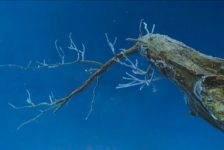
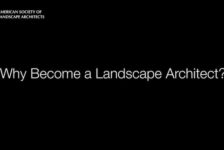
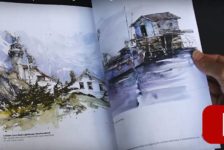
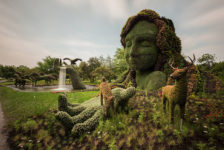

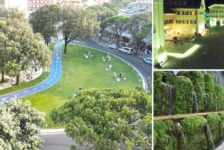
Eric Gilbey
Kudos to Susan for her work as a prominent landscape designer and for her passionate work for APLD International. I am honored to have met her and to have worked with the APLD NJ in the Social Networking event recently. Kudos to Land8Lounge for showcasing her as the Featured Member and to you, Jessica for posting this interview.
Kevin J. Gaughan
Great interview Jess, thanks!
Adam Regn Arvidson
This is perhaps totally unfounded (and I did just profile another APLD member), but this seems a good place to ask: I understand that some chapters of APLD have advocated watering down or removing altogether registration laws for landscape architects. Anyone know if this is true? How do the loungers feel about this?